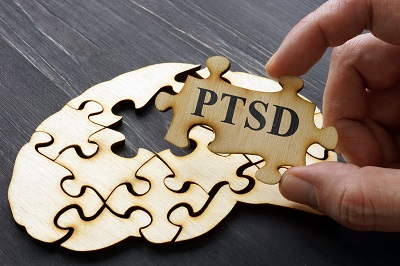How to Prevent Trauma From Becoming PTSD
How to Prevent Trauma From Becoming PTSD

There is no right way to handle trauma. Each individual moves at their own speed and has their own readiness to confront pain and suffering.
Unfortunately, there is no way to expedite the process of healing from trauma. The human condition is simply hard and comes jam-packed with suffering. The good news is that the intensity of emotional pain always reduces with time. This is not just a trite sentiment, as there are neurological studies that have found the ways the brain works to heal emotional wounds. The brain is geared for survival and is always looking for new threats and information, which means old experiences eventually route to the back of the line to direct your attentional resources to what is new and potentially important. My clients often respond to this concept by stating: “This can't be true, because I have been in the same emotional pain for so long, and my traumatic event was years and years ago.” I explain to my patients that the natural response to emotional pain is avoidance behaviors: trying not to have it, ignoring it, or running from it. However, this keeps the emotional pain active and at the front of the mind. Thus, the brain continues to think there is an active threat and these old experiences do not travel to the back of the line. The brain thinks, “If there is not a threat, why are they trying so hard to not think or feel something?” By desperately trying not to have emotional pain, we inevitably bring upon longer-term suffering.
Studies have shown a correlation with the development of PTSD and avoidance behaviors. In other words, the more one tries not to think about a traumatic event, resists revisiting a traumatic place, and avoids contact with any potential triggers of the traumatic event, the more likely one is to develop PTSD.
The main difference between PTSD and the experience of trauma is important to note. A traumatic event is time-based, while PTSD is a longer-term condition where one continues to have flashbacks and re-experiencing the traumatic event. In addition, to meet criteria for PTSD there must be a high level of ongoing distress and life impairment.
Studies have compared individuals who have experienced the same traumatic event such as living through a weather-related disaster or terrorist attack. A review of the literature on resiliency and recovery following traumatic events identified the following as protective factors for developing PTSD, meaning those who engaged in these did not endure longer-term suffering:
- Continuous contact with and support from important people in your life
- Disclosing the trauma to loved ones
- Identifying as a survivor as opposed to a victim
- Use of positive emotion and laughter
- Finding positive meaning in the trauma
- Helping others in their healing process
- Holding the belief that you can manage your feelings and cope
No one can prevent the pain and suffering tied to the human experience, it is inescapable. We will all experience losses of immense proportions. What we can prevent, however, is suffering on top of pain. I sometimes describe this to my patients at stubbing your toe and then being so frustrated that you stubbed your toe that you then punch yourself in the face.
You can allow yourself to just have pain and not suffering on top of pain by opening yourself up to the thoughts, feelings and sensations associated with loss and trauma. Now this does not mean to flood yourself, or artificially bring up memories and triggers randomly throughout your day. Instead, when these distressing thoughts and feelings do arise, welcome them. I know the concept of welcoming pain is a tricky one to grasp. After all, who wants to welcome pain? But pain is there for a reason. The pain we feel when touching a hot stove is there to teach us that fire is dangerous to the skin. The pain we experience after living through a trauma is there to guide us in the future and to see what lessons there are to learn that may protect us from future loss.
One exercise you can practice is to set a timer for five minutes each day. In these five minutes, you are to open up to any thoughts, sensations, or feelings that are associated with the trauma. I describe this to my patients as setting “office hours,” where all thoughts, feelings, sensations and images are welcome. For the rest of the day, when painful internal experiences arise, you can acknowledge the thoughts, feelings or images and gently remind them that they can come back during office hours, but at the current moment there are other tasks you need to available for.
Agaibi, C.E., & Wilson, J.P. (2005). Trauma, PTSD, and resilience: A review of the literature. Trauma, Violence, and Abuse, 6, 195-216.
Bonanno, G. A. (2004). Loss, trauma, and human resilience: Have we underestimated the human capacity to thrive after extremely aversive events?. American psychologist, 59(1), 20.
Other resources:
Understanding PTSD and PTSD Treatment
Partnering with Youth and Family
Trauma and Families: Fact Sheet for Providers












